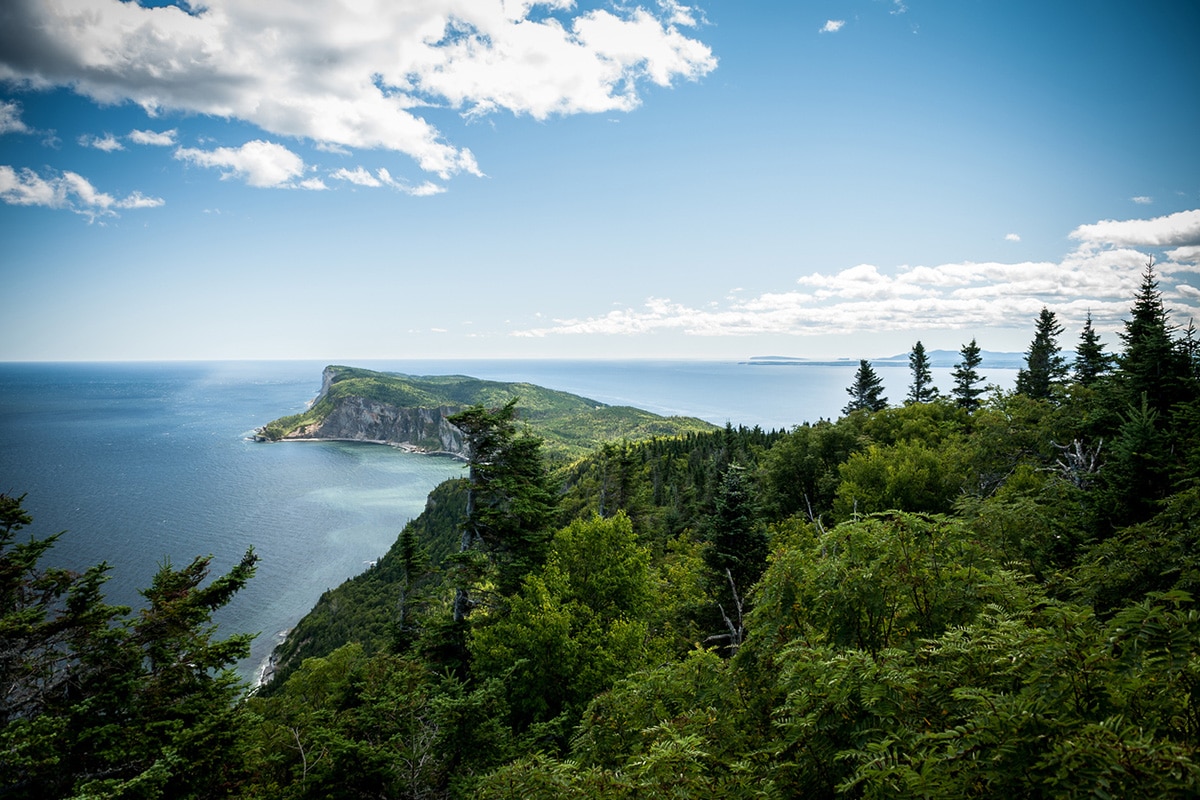
Good day, Earthlings! That is our weekly e-newsletter on all issues environmental, the place we spotlight tendencies and options which might be shifting us to a extra sustainable world. (Join right here to get it in your inbox each Thursday.)
This week:
- Take photos in your yard this weekend to assist save nature
- Is the Nice Barrier Reef in peril or not?
- Hotter nights are an neglected impact of world warming
Take photos in your yard this weekend to assist save nature
Ever want you might determine all of the weeds, bugs and different vegetation and animals in your yard? Canadians are invited this week to get some knowledgeable assist with that — and assist save nature, together with endangered species, within the course of.
From Thursday, July 29 to Monday, Aug. 2, the Nature Conservancy of Canada (NCC) is working its Massive Yard BioBlitz. It is an occasion anybody can take part in as a volunteer or “citizen scientist” by taking photos of vegetation, animals and fungi wherever they’re, together with backyards.
Members then add them to a smartphone/internet app known as iNaturalist that identifies them utilizing synthetic intelligence. The identification is later verified by consultants world wide. (Full disclosure: I am an avid person of the app and have registered for this occasion.)
“A part of the intent is to get folks to find the character round them and hopefully join with that,” mentioned Dan Kraus, senior conservation biologist with the NCC. “Not solely are you able to contribute, however you can even be taught quite a bit.”
The primary annual Massive Yard BioBlitz final 12 months generated greater than 20,000 submissions of vegetation and animals, together with some in classes that conservationists are notably on this 12 months:
-
Species in danger, corresponding to turtles, monarch butterflies, some bumblebees, a lot of which reside in city areas. Researchers are additionally inquisitive about species recovering from close to extinction, corresponding to peregrine falcons.
-
Invasive species, corresponding to emerald ash borer or European frequent reed.
Kraus mentioned the information is beneficial to scientists for assessing whether or not populations of species in danger are rising or lowering, monitoring the unfold of invasive species and seeing the place species are shifting on account of elements corresponding to local weather change.
Kraus mentioned that might assist conservationists put together to raised handle species in danger sooner or later — for instance, by defending the habitat they’re shifting into.
So if you wish to take part within the BioBlitz, how do you begin?
Kraus recommends downloading the iNaturalist app and practising with it. He suggests beginning with vegetation, which pose for photographs extra constantly than animals and do not thoughts you getting up shut.
You possibly can register to take part any time throughout the BioBlitz by following directions on the occasion web page.
You can even preserve making observations after the five-day occasion ends — species you add later will not be a part of this 12 months’s marketing campaign, however can be a part of the information on iNaturalist and could also be added to different initiatives. (A few of my very own have been added to the Georgian Bay Biosphere and Ontario Butterfly Atlas, for instance.)
Kraus hopes the occasion will encourage extra folks to enroll with iNaturalist and preserve utilizing it.
“There are all these discoveries which might be ready to occur throughout the nation,” he mentioned.
“Individuals are discovering issues that scientists haven’t seen earlier than, or they’ve not been recorded in that space. So [the public’s observations] may actually assist us to raised perceive our Canadian wildlife, which is important in a world that is quickly altering due to local weather change and habitat loss.”
— Emily Chung
Reader suggestions
We have been asking readers what they’re doing in a different way in and round their dwelling to learn the atmosphere. This week, a reader from Regina who goes by Iron Maiden wrote:
“I am planting heirloom greens so I can save the seeds and so have the ability to replant subsequent 12 months and the subsequent, by no means having to purchase extra seeds once more, ever. Additionally, I participated in No Mow Might. My garden acquired to the purpose the place the dandelions started to fly, and that was OK by me. Bees have been in every single place.”
Ship us a photograph with an outline and the situation at [email protected].
Previous problems with What on Earth? are proper right here.
There’s additionally a radio present and podcast! Drought has unfold throughout a lot of Western Canada and the U.S., with impacts starting from stunted wheat fields to raging wildfires. This week, What On Earth will get the forecast on the altering water cycle and appears at how science and Indigenous data might assist us adapt. What on Earth airs Sunday at 12:30 p.m., 1 p.m. in Newfoundland. Subscribe in your favorite podcast app or hear it on demand at CBC Pay attention.
The Massive Image: Is the Nice Barrier Reef in peril or not?
With regards to visualizing the results of a warming planet, few examples have grow to be as symbolic because the Nice Barrier Reef, off the coast of Australia. A system of practically 3,000 reefs and 900 islands, the Nice Barrier Reef is taken into account one of many world’s foremost oceanic treasures. It is also been the location of nice harm, notably from coral bleaching. When the water is just too heat, coral expels algae, turning into white within the course of. The reef suffered main bleaching occasions in 2016, 2017 and 2020. Bleached coral is not essentially lifeless, however it’s undeniably careworn and in a precarious state. Given the reef’s vulnerability, a United Nations draft resolution launched in June mentioned it ought to be included on a listing of World Heritage Websites which might be “in peril.” The Australian authorities has opposed this designation, saying it unfairly targets the nation as a result of it’s perceived to be a laggard on local weather motion. Whereas the federal government has accomplished work to protect the reef, activists and plenty of scientists say that what Australia ought to actually be doing is curbing its carbon emissions. Earlier this month, the federal government satisfied the UN to maintain the Nice Barrier Reef off the endangered record — till 2022. Whereas some environmentalists see this as a setback, Richard Leck, head of oceans for the World Extensive Fund for Nature-Australia, mentioned, “UNESCO has put Australia on probation. Enterprise as ordinary on local weather is not going to stop an in-danger itemizing in a 12 months’s time.”

Scorching and bothered: Provocative concepts from across the internet
Hotter nights are an neglected impact of world warming

Scientists know that local weather change will lead to extra frequent and intense warmth waves.
They’re already having lethal penalties the world over. In response to a current examine revealed within the journal The Lancet, greater than 5 million deaths yearly between 2000 and 2019 have been related to “non-optimal temperatures,” with roughly 500,000 of them associated to warmth.
Through the warmth wave that suffocated British Columbia within the final month, greater than 800 folks died. In the identical interval final 12 months, there have been 232 deaths, based on the B.C. Coroners Service’s chief medical officer, Dr. Jatinder Baidwan.
Whereas we all know that daytime temperatures are rising, in some areas — particularly, elements of Ontario and Quebec — nighttime temperatures are warming even sooner.
Hotter nights imply our our bodies haven’t got time to chill off. For folks with well being points like coronary heart illness or bronchial asthma, for instance, this may be extraordinarily problematic and doubtlessly lethal.
“Our our bodies weren’t designed to place up with environmental heats that exceed the excessive 30s [Celsius],” Baidwan mentioned.
“If you concentrate on it, what occurs to an air con unit? While you stress it, it builds up with a lot of ice on the surface after which it stops working. And in some methods, that is an ideal analogy for what occurs to our our bodies. With excessive warmth, we simply discover it actually onerous to do the same old homeostatic kind of mechanisms and protocols that occur in our physique.”
The warmth wave that affected the Pacific Northwest was extremely uncommon — a once-in-1,000-years incidence, based on a current evaluation by the group World Climate Attribution. Nevertheless, elements of Jap Canada, together with Ontario and Quebec, are seeing extra frequent warmth waves and tropical nights, outlined as nighttime temperatures of 20 C or increased.
For instance, based on the Local weather Atlas of Canada, the variety of tropical nights in Toronto averaged roughly 6.9 yearly from 1976 to 2005. With local weather change, beneath a situation the place carbon emissions decline considerably, that’s anticipated to climb to 17.6 yearly from 2021 to 2050.
If present carbon emissions charges proceed, the common variety of tropical nights in Toronto is anticipated to hit 20.6 yearly from 2021 to 2050. From 2051 to 2080, beneath the 2 totally different eventualities for emissions, the common quantity would rise to 26.4 and 42.8, respectively.
In 2018, a warmth wave blanketed Montreal from June 29 to July 5; temperatures averaged roughly 34 C throughout the day. Nighttime temperatures did not fall beneath 20 C. In all, 66 folks died.
“We’re seeing a rise in scorching extremes in Canada that is bigger than the worldwide imply warming,” mentioned Nathan Gillett, a analysis scientist with Surroundings and Local weather Change Canada. “The common warming in Canada is about twice the worldwide imply warming. And the warmth extremes are additionally rising at the same charge. And it isn’t simply the most well liked most temperatures, however the minimal temperatures, the nighttime minimums.”
A 2019 report by the federal authorities mentioned that the nation is warming at greater than twice the speed of the planet.
A examine revealed within the journal World Change Biology final October discovered that nighttime temperatures are rising throughout many of the world. In these areas that noticed extra nighttime temperature warming than daytime, there was extra cloud cowl, increased precipitation and extra humidity.
As Earth continues to heat, air con might appear to be a attainable resolution. The issue is that it requires vitality and in addition produces warmth.
Cities additionally inadvertently create “warmth islands,” the place heating is additional amplified by concrete buildings, including extra stress to folks residing in a warmer local weather. Some cities like Toronto and Montreal are attempting to introduce greener constructing codes and designs to deal with this.
“[Heat waves aren’t] one thing we take into consideration as a giant hazard in Canada, however because the local weather warms, we’ll see this increasingly more,” mentioned Gillett.
— Nicole Mortillaro
Keep in contact!
Are there points you would like us to cowl? Questions you need answered? Do you simply need to share a form phrase? We would love to listen to from you. E-mail us at [email protected].
Join right here to get What on Earth? in your inbox each Thursday.
Editor: Andre Mayer | Emblem design: Sködt McNalty









